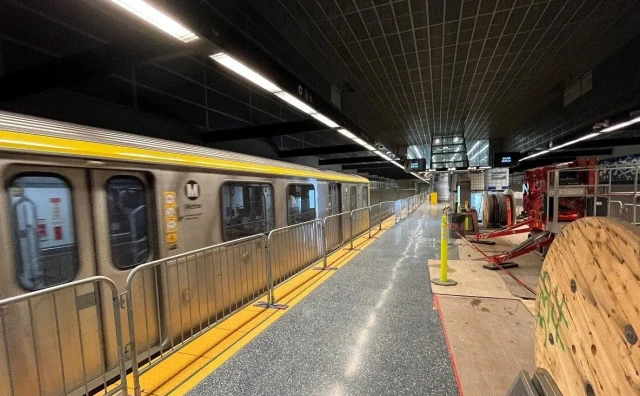With our free press under threat and federal funding for public media gone, your support matters more than ever. Help keep the LAist newsroom strong, become a monthly member or increase your support today during our fall member drive.
In 'Hugo,' Scorsese Salutes A Movie Magician


"All of a sudden, with a cut of the camera, the rocket goes right into the eye of the man on the moon," Selznick says. "He's got the rocket in his eye, and white goo is kind of coming down where the rocket hit the moon, and he's sticking his tongue out."
That kind of imagery also fascinated Scorsese, who tells Block about his memories of watching Melies' work.
"I was fascinated by the sleight-of-hand concept," Scorsese recalls. "[Melies] saw the potential in these moving images, and these images that came up on the screen ... absolutely took me to another planet."
Melies had a hand in every aspect of his films, Scorsese says, from painting the sets to the costumes to writing the stories to figuring out how to make his ideas work on film. One — perhaps apocryphal — anecdote has Melies discovering the potential of cinematic tricks while shooting the exterior of the Paris Opera. The camera jammed just as a bus was going by, so Melies stopped shooting to fix the problem, then started rolling again. The interruption made it look like the bus simply disappeared from the frame.
"And he said, 'Well, I think I can do that in a studio,' " Scorsese says. "He invented what we do now — blue screen, green screen — he invented all of that."

A Child's 'Sense Of Magic'
"If you ever wondered where your dreams come from when you go to sleep at night, just look around," Selznick's Melies tells a young Hugo. "This is where they're made."
Scorsese says Hugo is all about dreams, and as overworked as that idea may be in the movie business, it's particularly appropriate when it comes to a film based on a children's book.
"For children there's always a sense of magic," he says. "There's always a sense of something beyond the natural when you see the images move that way."
And he would know. Scorsese says he has fond memories of visiting friends who owned home movie projectors when he was a boy. "They projected some black-and-white cartoons. It was absolutely extraordinary to see that."
So making a film in 3-D was a natural next step, and one that allowed Scorsese to add depth to scenes of Hugo climbing on the train station's gigantic clock mechanisms.
"It sounds like a cliche, but the idea is that you're in the world with them," he says of his decision to film in 3-D. "When you start telling stories, you want sound, color, a big screen, so to speak, and depth. People have always wanted that, and so for me this was a great opportunity."
There was still a learning curve to using the new technology, but despite all that, Scorsese describes Hugo as one of the most rewarding experiences he's ever had making a film. It also may have helped that the characters in Hugo don't have a lot in common with the characters Scorsese usually works with, who "may not be the nicest people to be around."
"But you know, Taxi Driver in 3-D would have been interesting," he says. Just imagine a 3-D version of Robert De Niro asking a mirror, "You talkin' to me?"
"He'd be talkin' to ya," Scorsese says. "That would be amazing."
Copyright 2025 NPR
At LAist, we believe in journalism without censorship and the right of a free press to speak truth to those in power. Our hard-hitting watchdog reporting on local government, climate, and the ongoing housing and homelessness crisis is trustworthy, independent and freely accessible to everyone thanks to the support of readers like you.
But the game has changed: Congress voted to eliminate funding for public media across the country. Here at LAist that means a loss of $1.7 million in our budget every year. We want to assure you that despite growing threats to free press and free speech, LAist will remain a voice you know and trust. Speaking frankly, the amount of reader support we receive will help determine how strong of a newsroom we are going forward to cover the important news in our community.
We’re asking you to stand up for independent reporting that will not be silenced. With more individuals like you supporting this public service, we can continue to provide essential coverage for Southern Californians that you can’t find anywhere else. Become a monthly member today to help sustain this mission.
Thank you for your generous support and belief in the value of independent news.

-
Kevin Lacy has an obsession with documenting California’s forgotten and decaying places.
-
Restaurants share resources in the food hall in West Adams as Los Angeles reckons with increasing restaurant closures.
-
It will be the second national day of protest against President Donald Trump.
-
The university says the compact, as the Trump administration called it, could undermine free inquiry and academic excellence.
-
This is the one time you can do this legally!
-
Metro officials said it will be able to announce an opening date “soon.”







